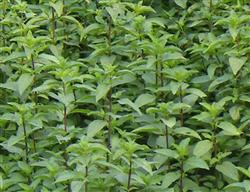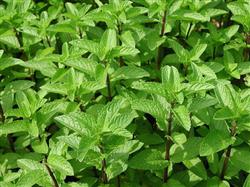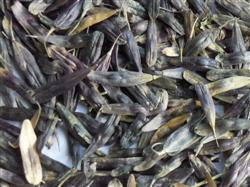Management of mint before and after emergence

According to the practice of large area mint cultivation for many years, strengthening the field management before and after emergence of mint seedlings is an effective measure to achieve high yield, high quality and high efficiency. It can increase the yield of peppermint crude oil by 1.5 kg per mu, with a net profit of about 100 yuan. First, clear the ditch to regulate the moisture and reduce the humidity in the field. Peppermint is both afraid of drought and not water-resistant, and the soil water holding capacity should be 75%, 80%, less than 55% or more than 95%, and seedling emergence and growth will be inhibited. If the soil moisture is saturated or supersaturated for a long time, it will not only fail to emerge, but even cause root asphyxiation. Therefore, clearing the ditch to manage the soil moisture, realizing the matching of the ditch system and ensuring the irrigation and drainage play an important role in ensuring dry seedlings, whole seedlings, full seedlings, strong seedlings and reducing the occurrence of diseases. Second, remove impurities and maintain purity and improve the quality of crude oil. Impurities should be removed 3 times after mint emergence, which is a necessary measure to improve the quality of crude oil. According to the character of the original variety and the smell of the leaves, the mint plant should be pulled out from the field by root. It is not too late to remove impurities sooner rather than later, so that the field purity of peppermint is more than 99%, and the purity of crude oil is more than 98%. In this way, each kilogram of crude oil can be added by 1520 yuan. Third, thinning and thinning, reasonable close planting. Due to the influence of seed root, sowing quality, soil moisture and other factors, seedling emergence is often uneven. Therefore, thinning and thinning should be carried out from seedling emergence to bud emergence. Pour 1.5% urea solution on transplanting peppermint in time. Promote living plants. Reasonable basic seedling is the key to high quality and high yield of peppermint. The basic seedlings are insufficient, the amount of fresh grass is low, and the yield is not high; the basic seedlings are too large, although the amount of fresh grass is high, but there are more stems and fewer leaves, and leaves are the main storage organs of crude oil, so it is difficult to achieve high yield. According to the production practice for many years, the basic seedling pure cropping field is 30,000-40000 per mu, and the intercropping field is 50,000 per mu. Fourth, chemical weeding to prevent grass damage. The symbiotic weeds of mint in early cropping or continuous cropping were grasses and broad-leaved grasses, while those in flood-upland rotation were mainly sedges. Fields dominated by grasses were sprayed with 50 mu of fine grass EC of 50 mu to 30 kg of water at the stage of 4 leaves of grasses. Mixed fields of grasses and broad-leaved grasses were sprayed with 250 grams of 25% diuron wettable powder per mu and 40 kg of water before spring mint emergence, which could effectively prevent the harm of weeds. Fifth, timely prevention and control of diseases and pests. There are mainly black stem disease, seedling nuclear disease and virus in the seedling stage of mint. These diseases are mainly prevented by agricultural prevention and control, such as clearing ditch and regulating soil moisture, reducing field humidity, appropriately reducing the amount of nitrogen fertilizer, increasing the amount of phosphorus and potassium fertilizer, applying organic fertilizer, reasonable close planting, improving ventilation and light transmission conditions and so on. Snail and ground tiger, the main pests of mint seedling stage, used 250 grams of 90% crystal trichlorfon per mu, dissolved with appropriate amount of water, sprayed in 20 kg fried bean cake or cotton cake to form poison bait, evenly sprinkled in the field in the evening, the control effect was more than 90%, aphids reached the standard field, 2.5% enemy was used to kill EC 1620 ml per mu, and 30 kg of water was evenly sprayed, and the control effect reached 96%. Sixth, apply fertilizer reasonably to promote the seedling to be strong but not prosperous. The head mint should not apply too much nitrogen fertilizer at the seedling stage, otherwise the growth is too prosperous and the stem is weak, resulting in lodging in the middle and later stage. And because most of the basic leaves of peppermint fall off into invalid leaves in the middle and later stage, especially the basic seedlings are on the high side and lose fat in the middle and later stage, this phenomenon is more prominent, so seedling fertilizer should be controlled. The soil is fertile, the base is fertile, and the leaves with normal color after emergence generally do not apply fertilizer. On the other hand, for those with poor soil quality and insufficient base fertilizer, the basic seedlings per mu were less than 20,000 per mu and the leaves were obviously yellowed, urea was applied 8kg per mu to promote the seedlings to change from weak to strong.
- Prev

High-yield cultivation techniques of peppermint
Mint is one of the main cash crops. The plant is used as a whole grass or as a medicine. It has strong adaptability, like temperature and humid environment, and has strong vitality under dry conditions. After rhizome planting, seedlings can emerge at a daily average temperature of 6 ℃, and grow fastest from May to June, and the suitable temperature for growth is 20-30 ℃.
- Next

mint blight
Banlangen seeds have a life span of 2 years, more than 2 years after the seeds do not germinate, even if a small part of germination, after a long time will die, said "do not establish seedlings", so you should try to buy new seeds. General new production of Isatis seeds (also known as large green seeds) appearance color blue black, good gloss, shiny, fragrance is stronger,...
Related
- Fuxing push coffee new agricultural production and marketing class: lack of small-scale processing plants
- Jujube rice field leisure farm deep ploughing Yilan for five years to create a space for organic food and play
- Nongyu Farm-A trial of organic papaya for brave women with advanced technology
- Four points for attention in the prevention and control of diseases and insect pests of edible fungi
- How to add nutrient solution to Edible Fungi
- Is there any good way to control edible fungus mites?
- Open Inoculation Technology of Edible Fungi
- Is there any clever way to use fertilizer for edible fungus in winter?
- What agents are used to kill the pathogens of edible fungi in the mushroom shed?
- Rapid drying of Edible Fungi

